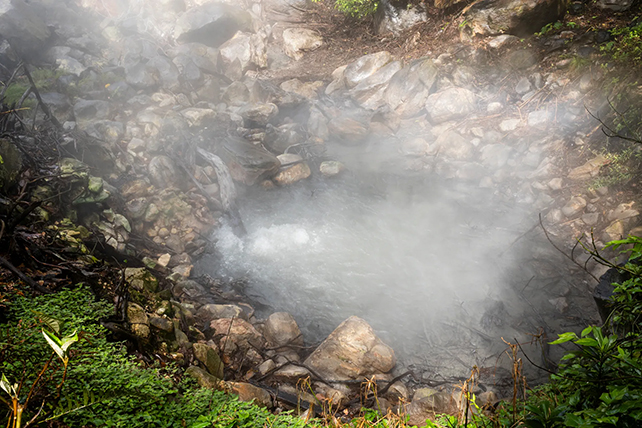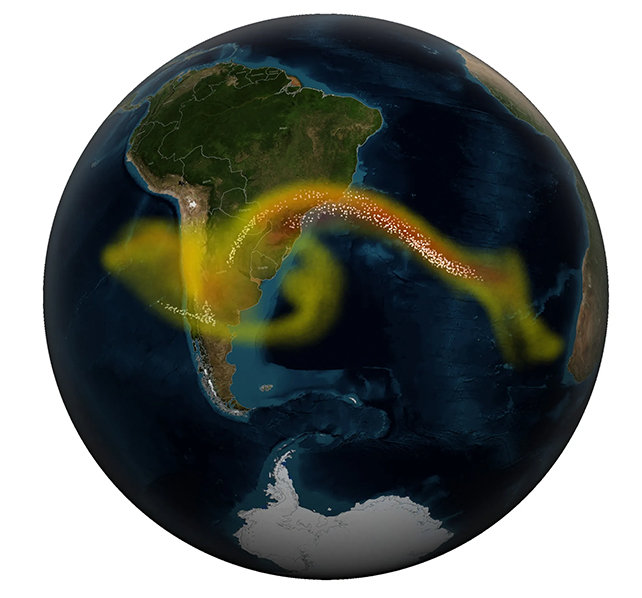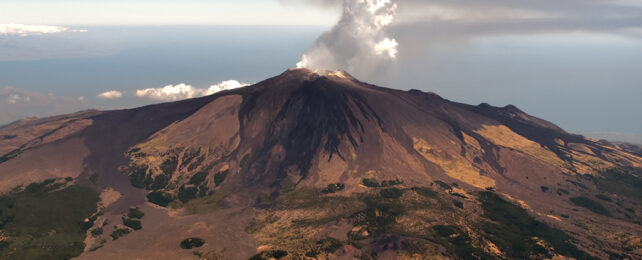The science of predicting volcanic eruptions can genuinely save lives – potentially, a lot of lives – and researchers have shown that tree leaf colors can act as warning signals around a volcano that's about to blow.
As volcanoes get more active and closer to an eruption, they push magma up closer to the surface, releasing higher levels of carbon dioxide. That in turn can boost the health of the surrounding trees, making leaves greener.
And those changes – specifically in the measurement known as the normalized difference vegetation index (NDVI) – can be spotted by satellites in space. We could be looking at an early warning system for eruptions that doesn't require any local field work or ground sensors, so it could work in remote and difficult-to-access areas.
"There are plenty of satellites we can use to do this kind of analysis," says volcanologist Nicole Guinn, from the University of Houston.
Guinn was the first author of a recent study looking at carbon dioxide levels around Mount Etna in Italy. The study compared data from sensors around the volcano with satellite imagery, finding a strong relationship between more carbon dioxide and greener trees.
Across the course of two years, the team found 16 clear spikes in carbon dioxide and the NDVI, matching magma movements underground. The patterns were even observed farther away from faults in the mountain.

That study referenced earlier research from 2019, led by volcanologist Robert Bogue of McGill University, which showed that carbon dioxide emitted by two active volcanoes in Costa Rica had an impact on leaf color in tropical trees in the area.
Now Guinn and Bogue, together with other researchers, are working on a project led by NASA and the Smithsonian Institution, analyzing changes in the color of plant life around volcanoes in Panama and Costa Rica.
It's part of the collaborative Airborne Validation Unified Experiment: Land to Ocean (AVUELO) mission, which is looking to develop more ways in which we can measure the health of the planet from satellites. Current methods, like NASA's Orbiting Carbon Observatory 2, are only strong enough to pick up major eruptions.

"A volcano emitting the modest amounts of carbon dioxide that might presage an eruption isn't going to show up in satellite imagery," says Bogue.
"The whole idea is to find something that we could measure instead of carbon dioxide directly, to give us a proxy to detect changes in volcano emissions."
There are multiple signals that can be interpreted to predict volcanic eruptions, including the rumble of seismic waves and changes in ground height. With the greening of leaves from carbon dioxide emissions, we now have another signal to measure – even if it won't be suitable for all sites.
The AVUELO researchers are also interested in the broader effects of increased carbon dioxide on trees. As our world warms up due to human emissions of carbon dioxide, we could be increasingly reliant on vegetation to regulate this greenhouse gas.
"We're interested not only in tree responses to volcanic carbon dioxide as an early warning of eruption, but also in how much the trees are able to take up, as a window into the future of the Earth when all of Earth's trees are exposed to high levels of carbon dioxide." says climate scientist Josh Fisher, from Chapman University in California and part of the AVUELO team.
The Mount Etna research was published in Remote Sensing of Environment.
